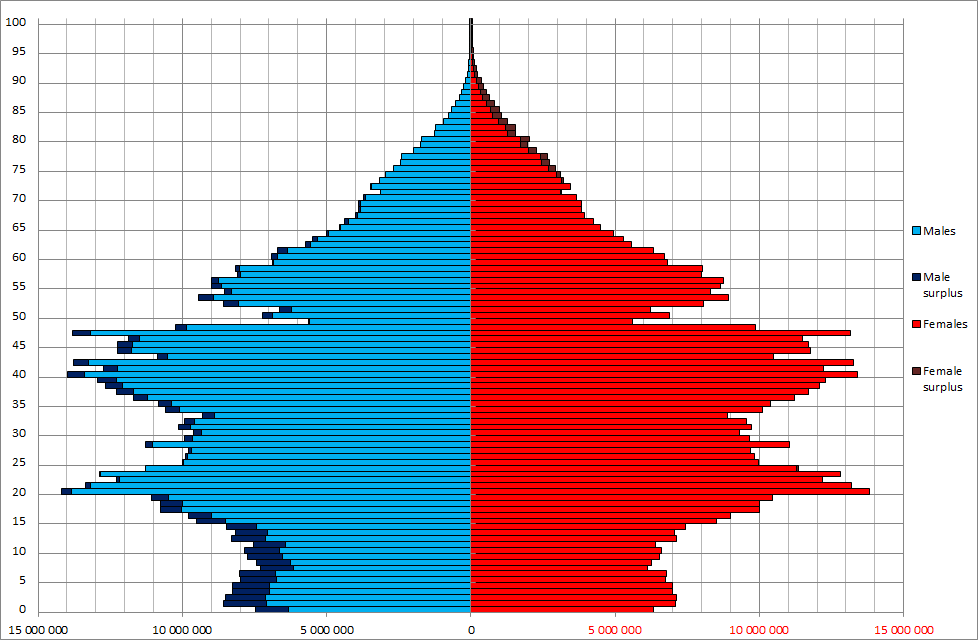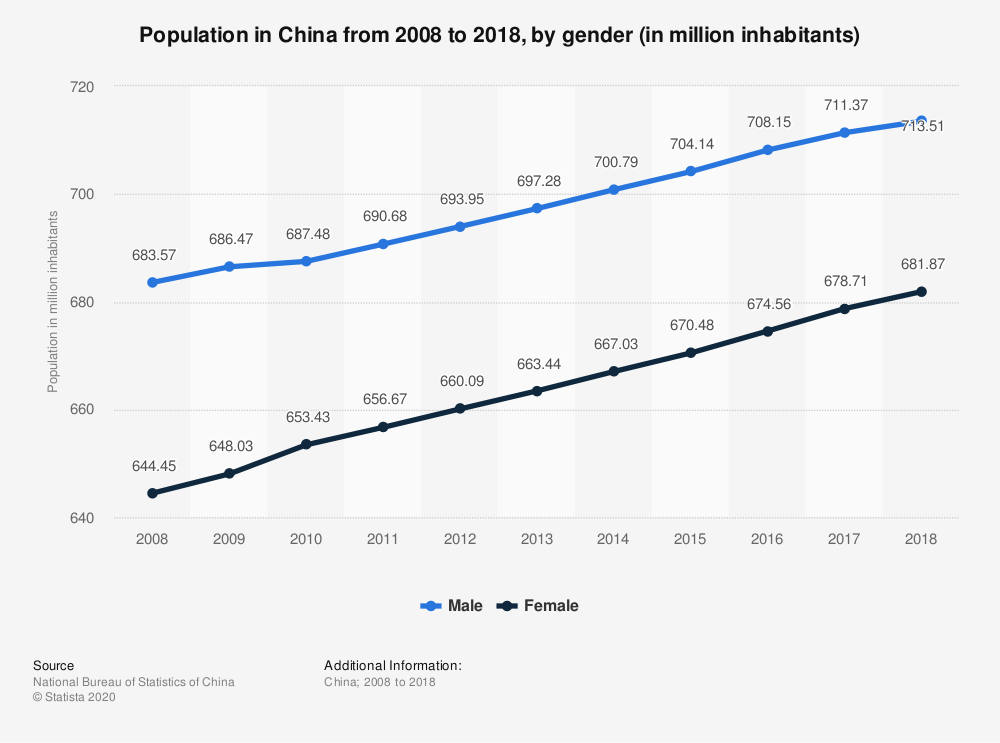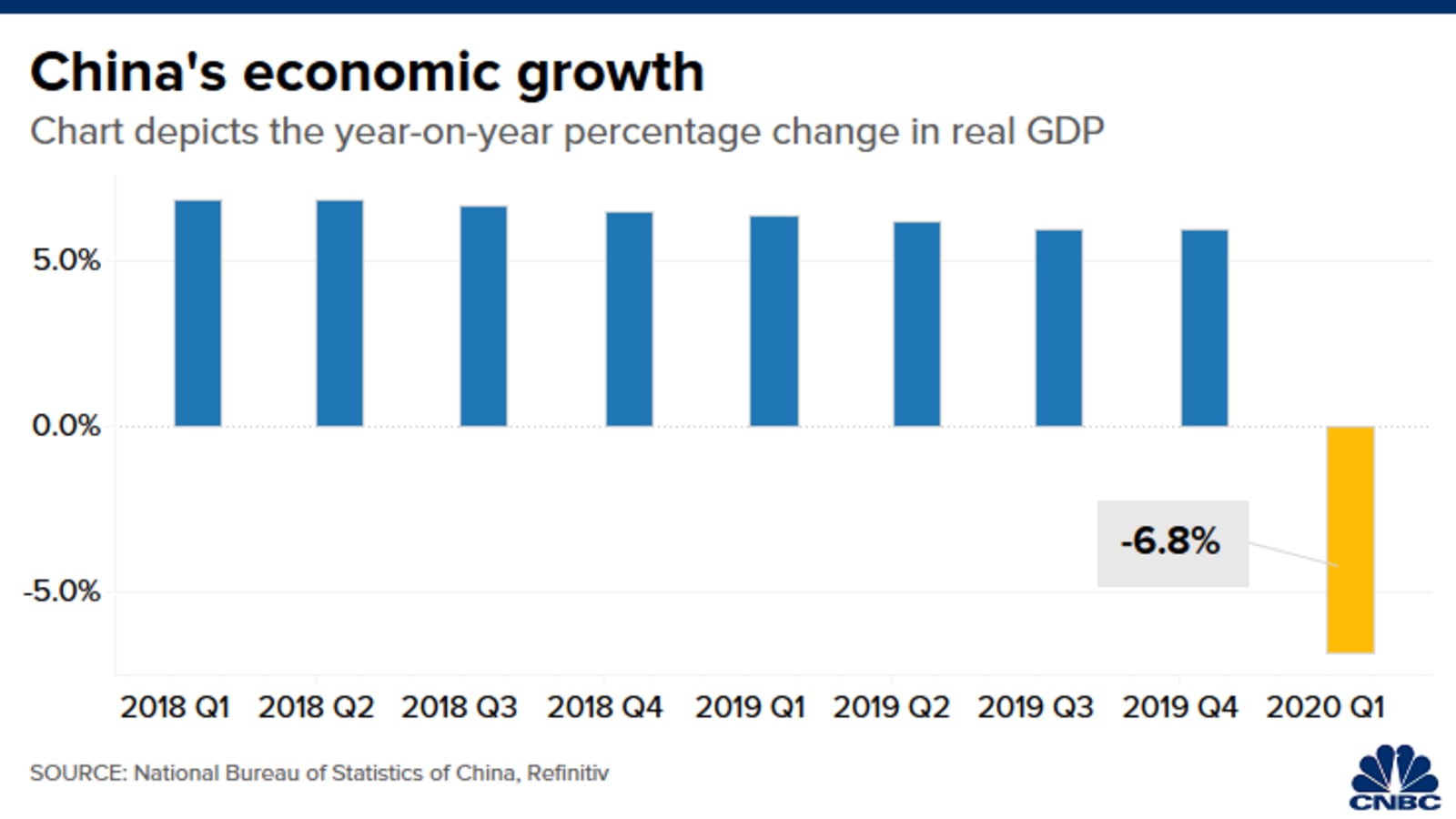Geographical Profile
China is located in Southern Asia along the Pacific Ocean Coastline, and geographically, this is the third-largest after Canada and Russia. Its coastline is 18,000 kilometers long, and the entire country is 9.6 million square kilometers, and on the map, it has the shape of a rooster (Mishra, 2020). The country has 19 bordering countries, including Afghanistan, Malaysia, Burma, Russia, Philippines, Indonesia, Korea, Tajikistan, North Korea, Mongolia, Vietnam, Bhutan, India, Kyrgyzstan, Japan, Brunei, Nepal, Kazakhstan, Laos, and Pakistan (Mishra, 2020). The expansive landmass of the country has basins, foothills, plateaus, plains, and mountains. Plateaus, foothills, and mountains occupy almost half of the total land, lower in the east and higher to the west. Qinghai-Tibet forms the highest topography, with an average height of more than 4000 meters. Quliashan and the Kunlushan Hengduan Mountains divide the first and the second step.
Mount Everest, which is the highest mountain t in the world, is found in this area (Fang & Zhang, 2017). Most of the plateaus and basins, such as Taihang and Daxingan, are between 1,000 and 2,000 meters high. Most people divide the country into four main regions: Northwest, South, North, and the Tibetan areas. Due to huge geographical differences, people from these four regions lead distinct lifestyles, and their customs are different. China has several lakes and rivers, and according to geological studies, more than 50,000 rivers in the county have drainage areas that are more than 100 kilometers (Mishra, 2020). Most of these rivers, such as the Yellow River and the Yangtze, which is the longest river in China, flow to the Indian Ocean. The areas with most of the lakes are found in the Lower-Middle Yangtze plain and the Tibet-Qinghai plateau. Most of the lakes in the Northwest part are salty while the ones in the Southeast are fresh. Qinghai, which is the most beautiful lake, is also the largest (Mishra, 2020). The country’s landscape and geography are beautiful thus attracting many visitors.

In comparison with other countries, China has the largest area occupied with mountains. Some of the mountains appear to reach the sky while others are lower with charming sceneries. Of all the mountains that are over 7,000 meters above sea level globally, more than 50 are found in China (Hillman, 2020). The People’s Republic of China has more than 130,000 kilometers of highways, making it the leading globally on highways (Hillman, 2020). This distance is enough to go around the world more than three times. Jinggang’ao Expressway, which is 800 kilometers long, links Hong Kong, Macao, and Beijing and is one of the busiest highways globally. In a single day, more than 140,000 tons of cargo are transported along the highway (Hillman, 2020). The country is continuing with ambitious projects to construct more highways in every part of the republic. Railway transport is the most important means of transport in long-distance transportation.
The country currently has more than 121,000 kilometers of railways, which is the second-largest rail network globally (Hillman, 2020). Towards the end of 2018, the country had more than 29000 kilometers of high-speed railway, making it the longest in the whole world. The railway system in China is amongst the busiest in the world, and in 2019 alone, the country generated 1,470,66 billion kilometers of passengers (Hillman, 2020). In education, China is home to one of the oldest and most reputable universities in the world. The University of Peking, one of the most reputable in the country, was established in 1898 (Fang & Zhang, 2017). Apart from being an educational hub, the country is also blessed with beautiful recreational facilities where most Chinese go hiking and swimming.
Demographic Profile
China has a large population with an insignificant youth component due to the Communist Part’s one-child policy. By December 2020, the country had a population of 1,394 billion people, which is the largest globally, followed by India (Fang, 2019). According to the census conducted in 2010, 91% are Han Chinese, and the rest are minority groups (Fang, 2019). It has a population increase rate of 0.39% and a global share of 18.59% ranking it in the first position. In 2018 the population grew by 0.5%, although its total number is still the highest (Fang, 2019). Most of the population is aged due to the one-child policy of the Communist Party.


Economic Profile
By 2019, China’s public sector was the largest single most employer accounting for more than 63%, with a $14.4 trillion GDP being ranked the 73rd (Shucheng, 2019). In the same year, the Chinese’s disposable income was 30,733 yuan being an increase of more than 8.9% for one year (Shucheng, 2019). The households in the urban areas had the highest income per capita of 42,359 yuan, which was also an increase of 7.9% (Shucheng, 2019). Therefore, the median income per capita was 26,523 yuan, which was also an increase from the previous year (Center for Macroeconomic Research at Xia, 2020). China has been experiencing an economic boom for the last decade due to several government interventions. The price index of second-hand houses in Shanghai increased by 8.31% after adjusting the rates of inflation (Fang, 2019). The average cost of a new home in Shanghai was US$4,930 per square meter (Shucheng, 2019). In Beijing and Guangzhou, the average cost of home properties was US$2,799 in the same period (Shucheng, 2019) China is one of the countries with the highest income growth, and its income per Capita is growing tremendously (Shucheng, 2019). The country’s economy is amongst the fastest growing in the world. Figure 4.

Government & Legal Profile
The government of the Republic of the People’s Republic of China is the state authority in the country exclusively under the leadership of the Communist Party of China. It comprises the military, the legislature, supervisory, executive, and prosecutorial units. The state power’s main organs are the President, the National People’s Congress, and the State Council (Zhong, 2015). The National People’s Congress (NPC) is the state’s final power with control over the basis of laws and the constitution (Shucheng, 2019). They also have powers over elections and the supervision of the officials of other government organs and agencies. The standing committee of NPC is the permanent organ in charge of legislation that adopts most of the national laws, interprets the laws and the constitution, and conducts any constitution reviews. The President is ceremonial regarding the decisions made by the NPC. The ministry of interior is the one charged with managing national parks and other recreational facilities. The ministry establishes the National Park and plans to review all matters about n National Parks and other recreational facilities. The decisions made by the commission and the ministry are final. The Communist Party is in control of all the activities taking place in the country (Zhong, 2015). Even the commission that is in charge of the parks and other recreational facilities derives its mandate from the party.
Leisure and Recreation Profile
Most of the people in China love participating in recreational activities that have a Chinese origin. They like spending most of their time outdoors as much as possible. Most parents take their children outdoor for Sai Tai yang, which means to soak in the sun. Even the games that are typically played indoor are played outside by the Chinese, and they include board games (Wang, 2016). Since they are sociable, they do not like participating in indoor games inside the building, but they rather go out to interact with as many people as possible. Other leisure activities that they also engage in include cycling and martial arts such as Shotokan and Kung fu. They also visit national parks to enjoy watching animals and other beautiful sceneries. One of those national parks is in the Wulingyuan National Park — Zhangjiajie’s Precipitous Pilla and is the only national park listed on top of the world list (Wang, 2016). The most popular activities in the park include mountain climbing, hiking, and rafting.
Another park preferred by the Chinese includes Jiuzhaigou National Park — Multicolored Mountain Lakes, known for its high-altitude valleys with lakes that have snowy peaks, colorful waterfalls, and forest slopes, and the Tibetan Villages. Most Chinese flock to these parks during the weekends with their families for enjoyment. Marveling at the lake, photography, and hiking are other activities visitors to this park engage in (Wang, 2016). Other notable parks include Lijiang Yulong Xueshan National Park — with Tiger Leaping Gorge and Huangshan National Park — the Legendary Yellow Mountains. China is the country with the highest population globally and the third-largest globally. The country has unique forms of a political system where the Communist Party has all the power instruments with little room for democracy. It is known for various geographical features ranging from mountains, rivers, plateau, basins, and lakes. It is also one of the fastest-growing economies, with most people being old due to the Community Party policy of one child.
References
Center for Macroeconomic Research at Xia. (2020). Chinaʼs macroeconomic outlook: Quarterly forecast and analysis report, 2019.
Fang, C. (2019). China’s economic growth prospects: From demographic dividend to reform dividend. Edward Elgar Publishing.
Fang, Y., & Zhang, Y. (2017). China’s high-speed rail technology: An international perspective. Springer.
Hillman, J. E. (2020). The Emperor’s new road: China and the project of the century. Yale UP.
Mishra, S. K. (2020). Chinese geography: Mountains, rivers, lakes, deserts, relief, lands, plateaus. Yale UP
Shucheng, L. (2017). Chinese economic growth and fluctuations. Taylor & Francis.
Wang, F. (2016). Geo-architecture and landscape in china’s geographic and historic context: Volume 3 geo-architecture blending into nature. Springer.
Zhong, Y. (2015). Local government and politics in china: Challenges from below. Routledge.